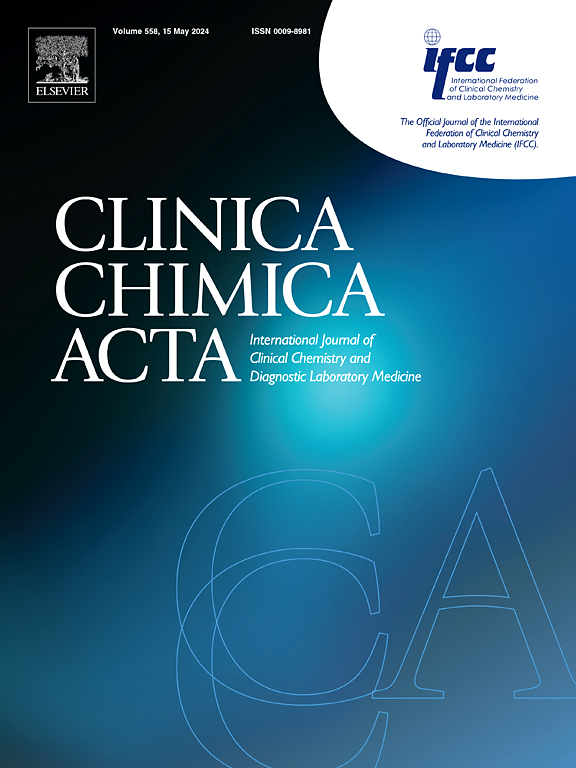Clinical phenotypes and biomarkers in chronic urticaria
IF 3.2
3区 医学
Q2 MEDICAL LABORATORY TECHNOLOGY
引用次数: 0
Abstract
The medical field faces considerable challenges in treating chronic urticaria (CU), which includes both chronic spontaneous urticaria (CSU) and chronic inducible urticaria, owing to its varied nature. The complexity of this condition stems from multiple factors: varying disease mechanisms, different ways in which symptoms manifest, and inconsistent treatment outcomes. Although both forms of CU display hives that persist beyond six weeks, they have distinct causes and progression patterns. This study examines CSU specifically, exploring its various manifestations and associated biological indicators. Currently, there is a pressing need to identify reliable, accessible biomarkers for CSU to enhance diagnosis and develop targeted treatments. Better insights into how specific disease patterns are related to biological markers would significantly improve our understanding of CSU development and enhance patient treatment approaches.
慢性荨麻疹的临床表型和生物标志物
慢性荨麻疹(CU)包括慢性自发性荨麻疹(CSU)和慢性诱导性荨麻疹,由于其不同的性质,医学领域在治疗慢性荨麻疹(CU)方面面临相当大的挑战。这种情况的复杂性源于多种因素:不同的疾病机制,不同的症状表现方式,以及不一致的治疗结果。虽然两种形式的CU显示荨麻疹持续超过六周,他们有不同的原因和发展模式。本研究以CSU为研究对象,探讨其各种表现及相关生物学指标。目前,迫切需要确定可靠的、可获得的CSU生物标志物,以加强诊断和开发靶向治疗。更好地了解特定疾病模式如何与生物标志物相关,将大大提高我们对CSU发展的理解,并提高患者的治疗方法。
本文章由计算机程序翻译,如有差异,请以英文原文为准。
求助全文
约1分钟内获得全文
求助全文
来源期刊

Clinica Chimica Acta
医学-医学实验技术
CiteScore
10.10
自引率
2.00%
发文量
1268
审稿时长
23 days
期刊介绍:
The Official Journal of the International Federation of Clinical Chemistry and Laboratory Medicine (IFCC)
Clinica Chimica Acta is a high-quality journal which publishes original Research Communications in the field of clinical chemistry and laboratory medicine, defined as the diagnostic application of chemistry, biochemistry, immunochemistry, biochemical aspects of hematology, toxicology, and molecular biology to the study of human disease in body fluids and cells.
The objective of the journal is to publish novel information leading to a better understanding of biological mechanisms of human diseases, their prevention, diagnosis, and patient management. Reports of an applied clinical character are also welcome. Papers concerned with normal metabolic processes or with constituents of normal cells or body fluids, such as reports of experimental or clinical studies in animals, are only considered when they are clearly and directly relevant to human disease. Evaluation of commercial products have a low priority for publication, unless they are novel or represent a technological breakthrough. Studies dealing with effects of drugs and natural products and studies dealing with the redox status in various diseases are not within the journal''s scope. Development and evaluation of novel analytical methodologies where applicable to diagnostic clinical chemistry and laboratory medicine, including point-of-care testing, and topics on laboratory management and informatics will also be considered. Studies focused on emerging diagnostic technologies and (big) data analysis procedures including digitalization, mobile Health, and artificial Intelligence applied to Laboratory Medicine are also of interest.
 求助内容:
求助内容: 应助结果提醒方式:
应助结果提醒方式:


